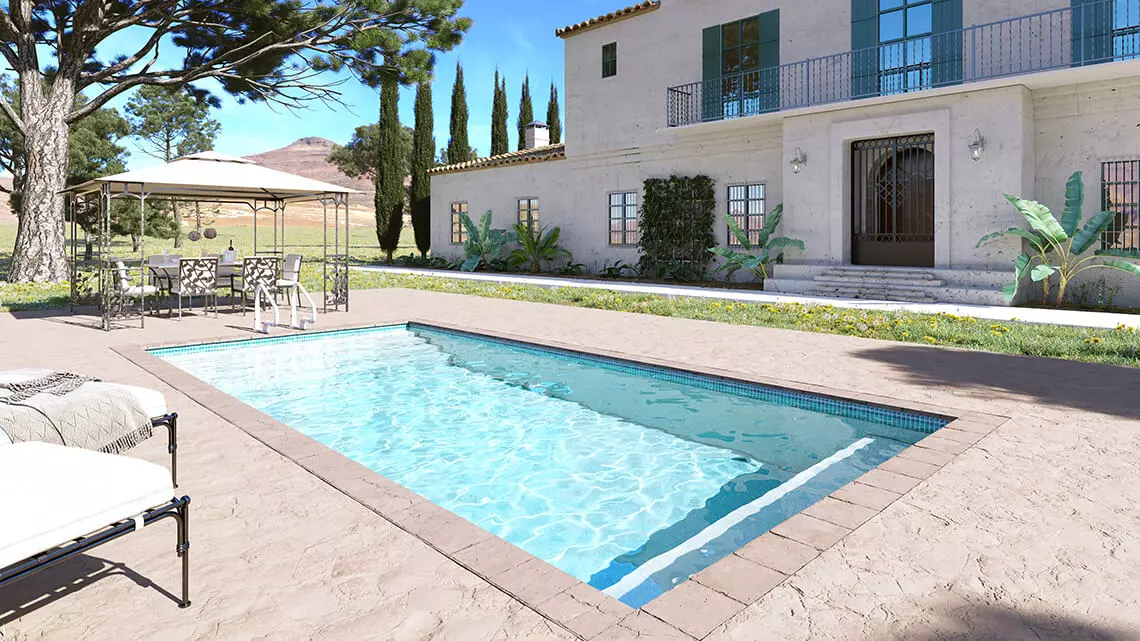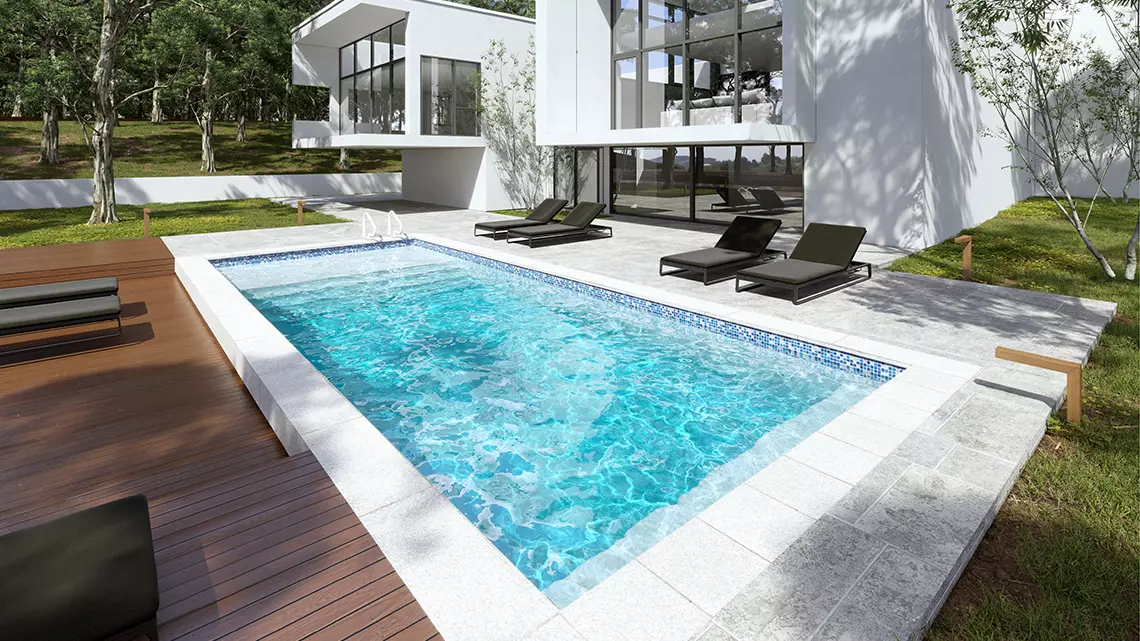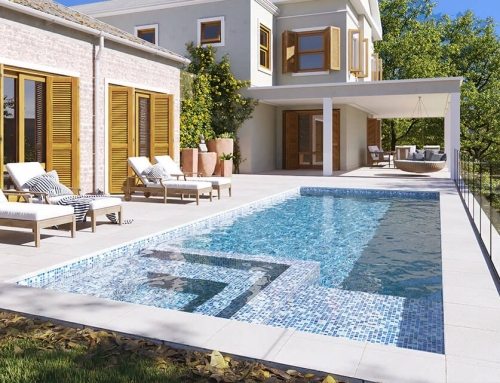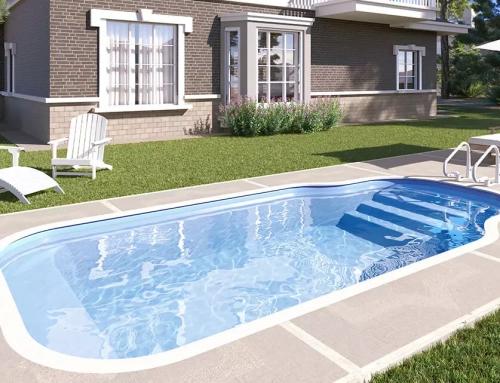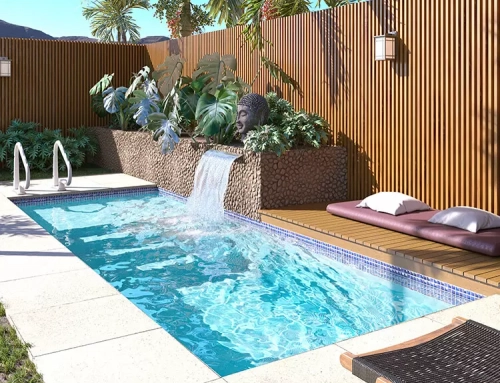A crystal-clear pool is the ultimate summer oasis, but it takes more than just water and a filter to keep it that way. The key to a safe and inviting swimming pool lies in maintaining the right pool chemical balance. In this blog post, we’ll dive into the world of pool chemistry, exploring the importance of chemical balance, the essential parameters to monitor, and how to achieve that perfect pool water balance.
Achieving and maintaining perfect pool chemical balance requires diligence, regular testing, and a good understanding of pool chemistry principles. By following the guidelines provided in this blog post and paying attention to these additional tips, you can ensure that your pool remains a safe, inviting, and enjoyable place for you and your family throughout the swimming season. So, here’s to a summer filled with refreshing dips and worry-free poolside relaxation!
Why Is Pool Chemical Balance Important?
- Health and Safety: An improperly balanced pool can become a breeding ground for harmful microorganisms like bacteria and algae, posing health risks to swimmers.
- Water Clarity: Balanced pool water is clear and inviting, while unbalanced water can become cloudy or discolored, making it less appealing.
- Equipment Longevity: Properly balanced water helps extend the lifespan of pool equipment, preventing corrosion and scale buildup.
- Comfort: Balanced water feels better on your skin and eyes. Unbalanced water can lead to skin irritation and eye discomfort.
Essential Parameters to Monitor
- pH Level: The ideal pH range for pool water is between 7.2 and 7.8. Adjust using muriatic acid or soda ash.
- Chlorine Levels: Maintain chlorine levels between 1-3 ppm to effectively sanitize the water. Adjust using chlorine tablets or shock treatments.
- Total Alkalinity (TA): The recommended TA range is 80-120 ppm. Adjust with sodium bicarbonate or muriatic acid.
- Calcium Hardness: Keep calcium hardness between 200-400 ppm. Adjust with calcium chloride or dilution with fresh water.
- Cyanuric Acid (Stabilizer): Maintain cyanuric acid levels between 30-50 ppm to stabilize chlorine. Adjust using pool stabilizer products or partial water replacement.
Achieving and maintaining perfect pool chemical balance is essential for health, water clarity, equipment longevity, and swimmer comfort. Regular testing and adjustments to pH, chlorine, total alkalinity, calcium hardness, and cyanuric acid levels are key to enjoying a safe and pristine swimming pool.
Remember that pool maintenance is an ongoing process, especially during the swimming season. With the right knowledge and care, you can create a beautiful and safe swimming environment for you and your loved ones to enjoy all summer long. Happy swimming!
Additional Tips for Maintaining Pool Chemical Balance
Now that we’ve covered the fundamentals of pool chemical balance, let’s delve a bit deeper into some additional tips and best practices to ensure your pool stays in perfect shape throughout the swimming season.
- Regular Testing
While we’ve discussed the essential parameters to monitor, it’s crucial to emphasize the importance of regular testing. Invest in a good-quality pool water test kit and follow the manufacturer’s instructions for accurate measurements. Testing should ideally be done at least once a week, especially during the peak swimming season.
- Balance Your Pool Water First
Before adding any chemicals to your pool, it’s essential to balance your pool water. Start with adjusting the pH level to the recommended range of 7.2-7.8. Once your pH is within this range, move on to other parameters like chlorine, total alkalinity, calcium hardness, and cyanuric acid.
- Shock Your Pool
Periodically, you should shock your pool to remove contaminants and restore chlorine levels. Shocking involves adding a larger-than-normal dose of chlorine to your pool. Follow the manufacturer’s instructions on the shock product you choose and be sure to maintain the recommended chlorine levels for safe swimming.
- Maintain Proper Filtration
Your pool’s filtration system plays a crucial role in keeping the water clean and balanced. Ensure that your filter is in good working condition and that you backwash or clean it regularly to maintain its efficiency.
- Keep Your Pool Clean
Regularly skim the pool’s surface to remove debris, leaves, and other contaminants. Use a pool vacuum to clean the pool floor and walls. A clean pool is less likely to develop water chemistry problems.
- Consider UV and Ozone Systems
For an extra layer of protection against microorganisms and to reduce the reliance on chlorine, you may consider installing UV or ozone systems in your pool. These systems can help improve water quality and reduce the need for chemicals.
If you encounter persistent water chemistry issues or are unsure about how to address a particular problem, don’t hesitate to consult a pool professional. They can provide expert advice and solutions tailored to your specific situation.
Achieving and maintaining perfect pool chemical balance requires diligence, regular testing, and a good understanding of pool chemistry principles. By following the guidelines provided in this blog post and paying attention to these additional tips, you can ensure that your pool remains a safe, inviting, and enjoyable place for you and your family throughout the swimming season. So, here’s to a summer filled with refreshing dips and worry-free poolside relaxation!
For more information about our in-ground fiberglass pool options, please visit our website: Artisian Pools
Contact Number: +1 (647)-417-9000
Email Address: info@artisian.ca



